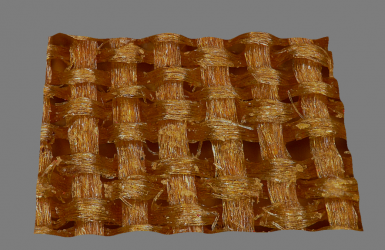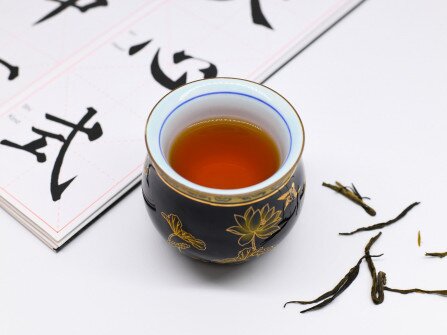Ancient Chinese Silk Textiles: Production, Function and Revitalisation

Project Overview
Research on silk textiles from Ancient China in the period 500-200 BCE has been focusing mostly on changes in artistic design through time and general weaving techniques. Through analysing textiles excavated from ancient tombs, scholars have dated when certain textiles were made and when certain decorative patterns emerged. Scholars have also attempted to relate decorative patterns in textiles to those on other materials like bronze mirrors. As for the study in general weaving techniques, the trend began from the excavation of many textile pieces from the Mashan M1 tomb in Hubei and other tombs from similar periods. Reports summarised spectacular weaving techniques detected in excavated textiles including jin 錦, juan 絹, sha 紗, luo 羅, and yi 綺. The number of threads used in forming the warps and wefts and the strength of the thread were well-documented for those textile collections.
Nonetheless, with these archaeological data and summaries alone, we know little on how specific designs were produced or exact weaving techniques were utilised to create individual textile pieces more than 2,000 years ago. This is one of the challenges faced in current study of ancient textiles from China. Reconstructing weaving techniques and exploring their relationship with designs becomes a crucial element in understanding early China around the establishment of Qin state power and unification through the perspective of textile production.
Another important challenge in ancient textile research is the preservation of ancient textile samples. Though silk fibre from typical Chinese Bombyx mori silkworm cocoons is one of the most durable of widely used natural fibres, historical silk is very fragile. Many textiles excavated since the 1980s have suffered from rapid decay, decolourisation and damage. The cost of maintaining an ideal environment for the preservation of textile materials is very high, further hindering in-depth study of weaving techniques. Current conservation methods rely largely on physical and chemical treatments developed decades ago, yet such treatments change the chemical stability of silk fiborin protein or involve adding foreign materials, which cannot significantly and consistently improve textile durability.
Therefore, a team consisting of art historians, conservators and biomaterial engineers is conducting a study to tackle these two challenges using advanced technology. The advancement in molecular genetics and biotechnology research allows the development of new non-damaging approaches in historic silk conservation. New biomaterial which is homogeneous to silk for use in the conservation and restoration of historic silk textiles is under development. Hubei Museum has provided excavated silk fragments for this study, including one silk piece dated from 300-200 BCE.
As for understanding ancient weaving processes, the team will create digital 3D models of a textile from microscopic images. Models make it easier to understand how warps and wefts cross over during weaving. Rapid recognition of patterns and easier reproduction and conservation are also possible. This technological approach helps us to more effectively reconstruct and understand specific weaving methods and designs, which is beneficial for further studies on the operation of the textile industry and provides insight into the wider socio-economic landscape behind China’s textile industry more than two millennia ago.
Grant
- General Research Fund of the Research Grants Council
Publications
- (Forthcoming). “Chudi de daguimo shengchan – yi tongjing, sizhipin weili” 楚地的大規模生產——以銅鏡、絲織品為例 (Mass production in the Chu area – examples from bronze mirrors and textiles). “Chuwenhua yu Changjiang Zhongyou zaoqi kaifa guoji xueshu yantaohui,” in Chu Culture and the Early Development of the Middle Reach of the Yangtze River 楚文化與長江中游早期開發, Wuhan University.
- 2018. “Cultural Interactions throughout the South China Sea,” in Voyages, Migration, and the Maritime World: On China’s Global Historical Role, eds. Ho Clara Wing-chung, Ricardo K. S. Mak, and Tam Yue-him, pp. 91-120. Berlin, Boston: De Gruyter Oldenbourg. DOI: https://doi.org/10.1515/9783110587685
- 2018. “Helihuo Dao yu wenwu jiaoyi” 荷李活道與文物交易 (Hollywood Road and Trades of Antiques), in Helihuo Dao: xunmi wangri fenghua 荷李活道:尋覓往日風華 (Hollywood Road: In Search of Past Splendor), eds. Zheng Hongtai 鄭宏泰 and Zhou Wengang 周文港, pp. 81-104. Hong Kong: Chung Hwa Book Company.
- 2018. Wang, Jidong, Jiajia Dai, Kin-Sum Li, Jun Wang, Mingqiang Wei, *Mingyong Pang, “Cost-effective printing of 3D Objects with Self-Supporting Property,” The Visual Computer, pp. 1-13, DOI: https://doi.org/10.1007/s00371-018-1493-y
Contact Our Researchers
Academy of Chinese, History, Religion and Philosophy
School of Chinese Medicine
- Dr Li Li, Institute of Textile and Clothing, The Hong Kong Polytechnic University
- Mr Chen Zifan, Department of Conservation, Hubei Provincial Museum






